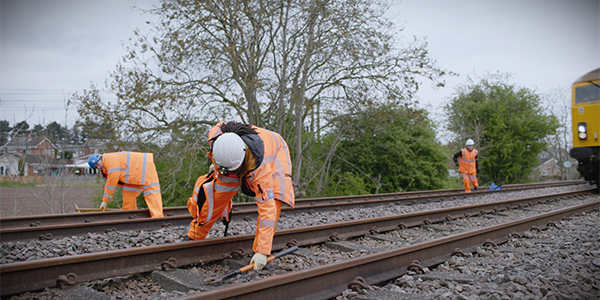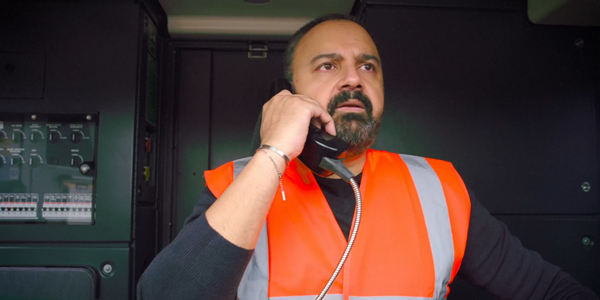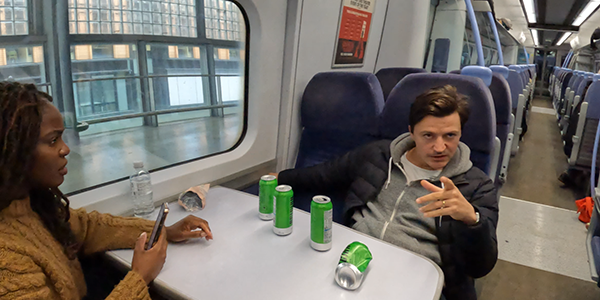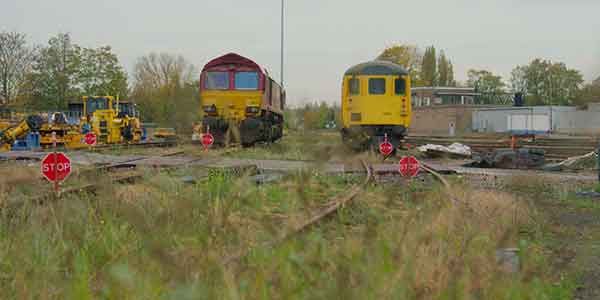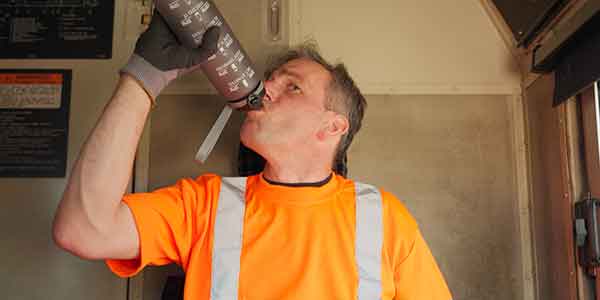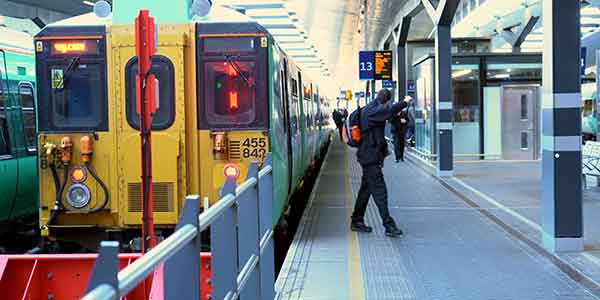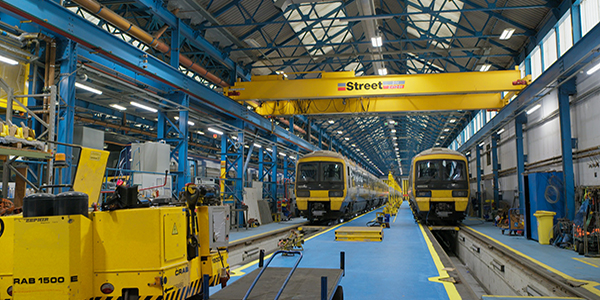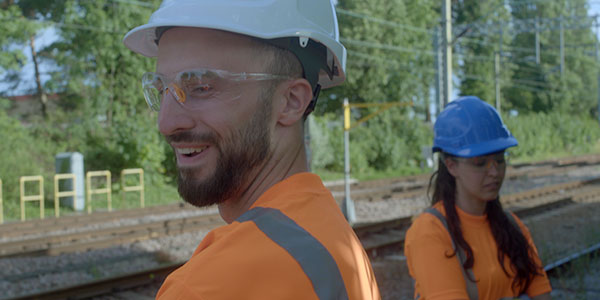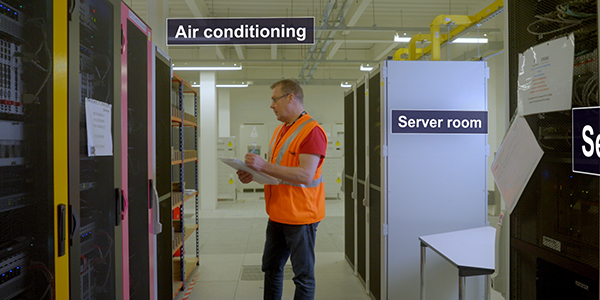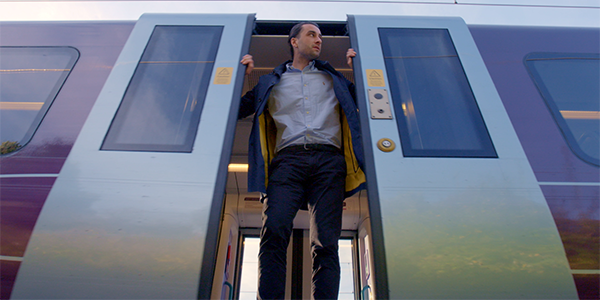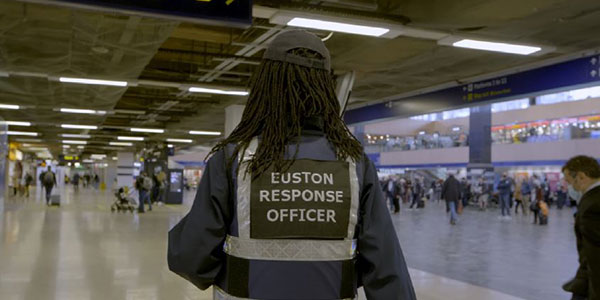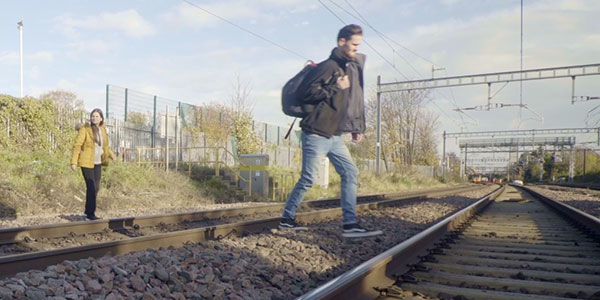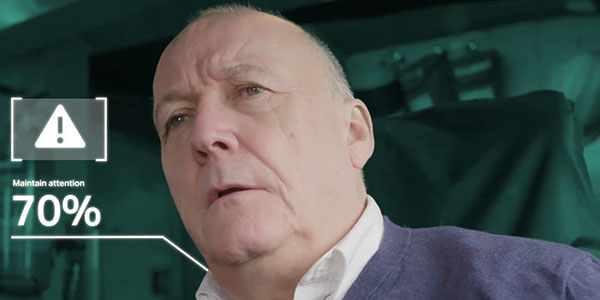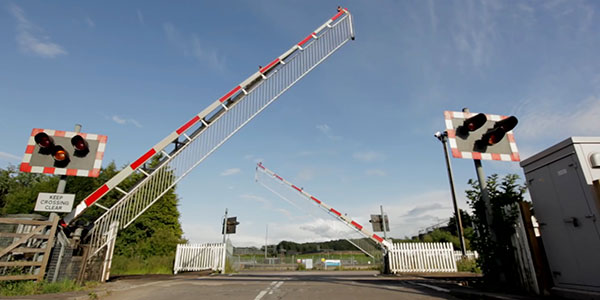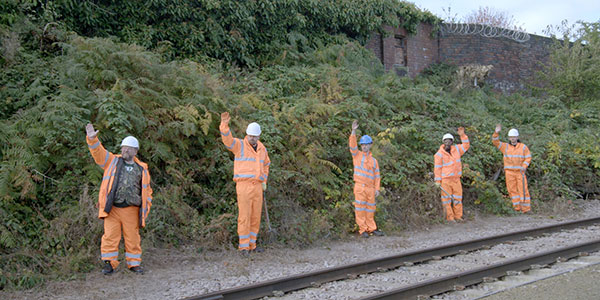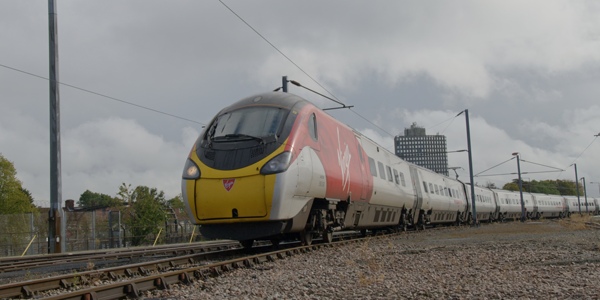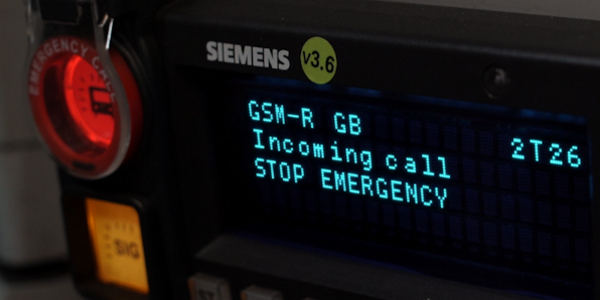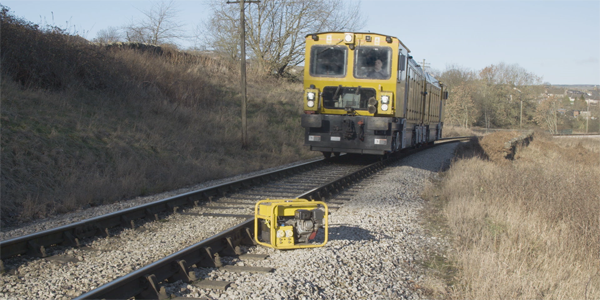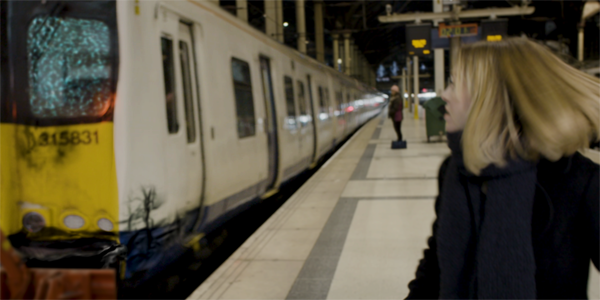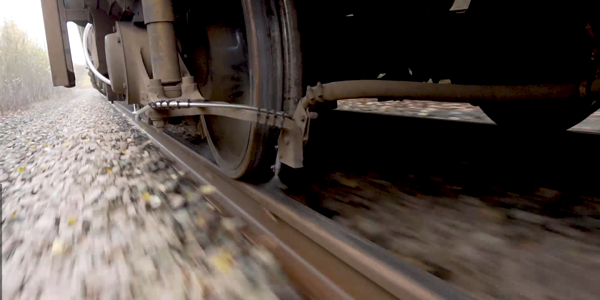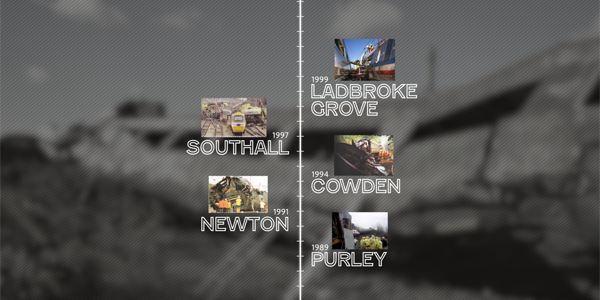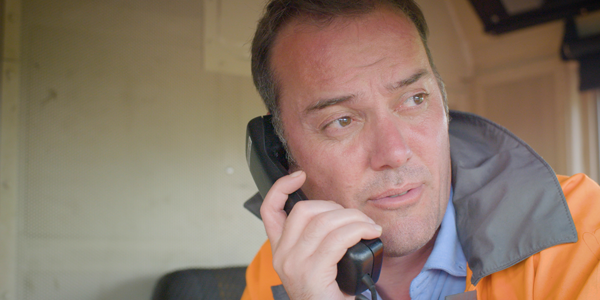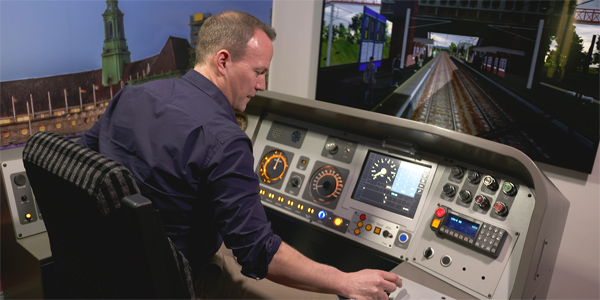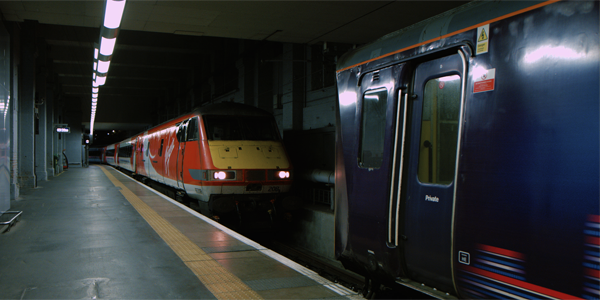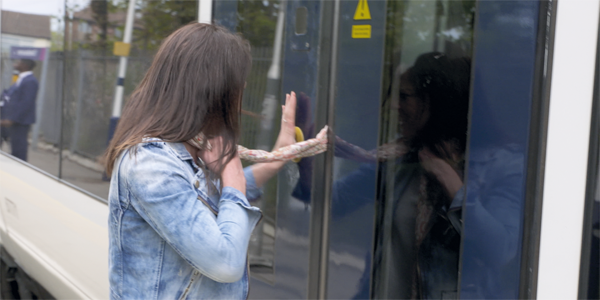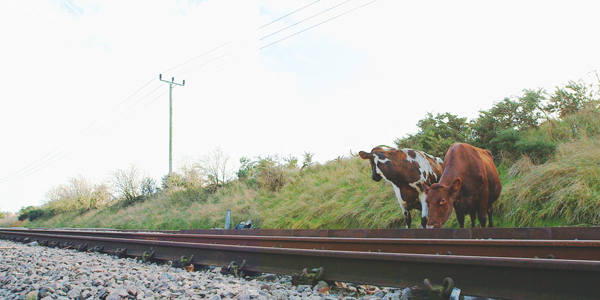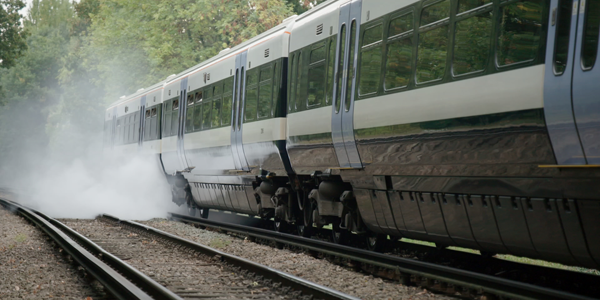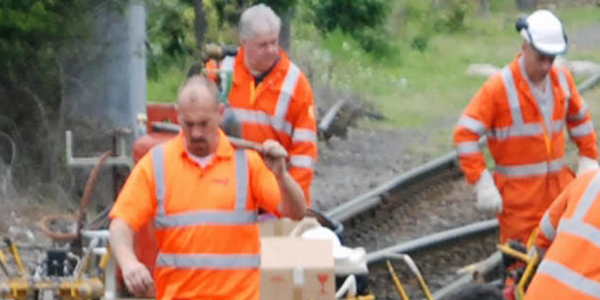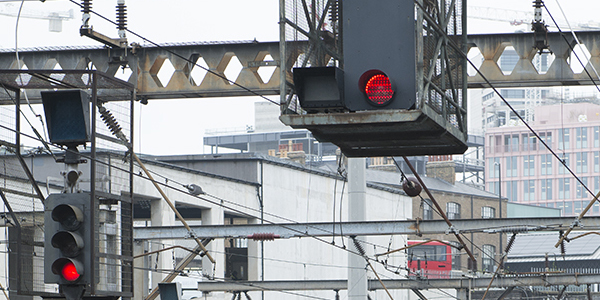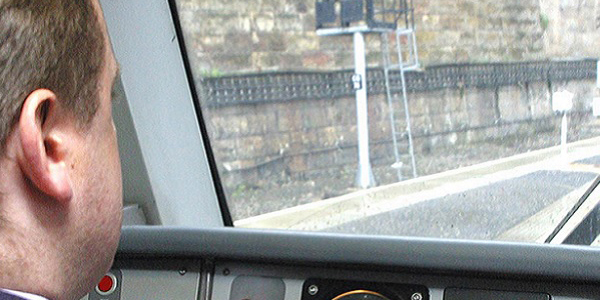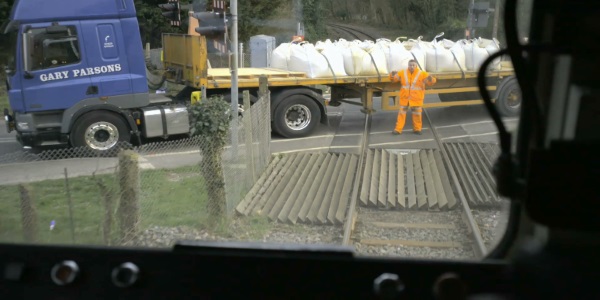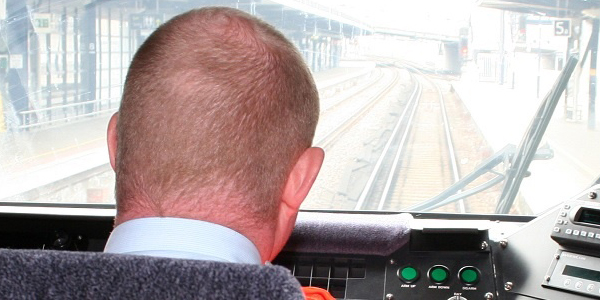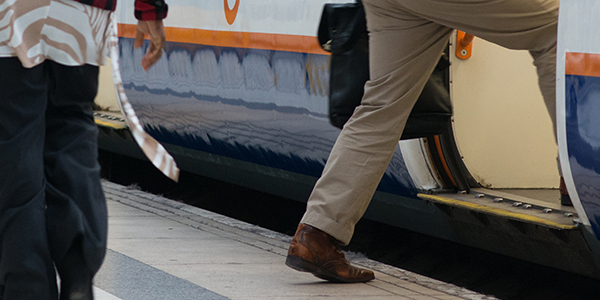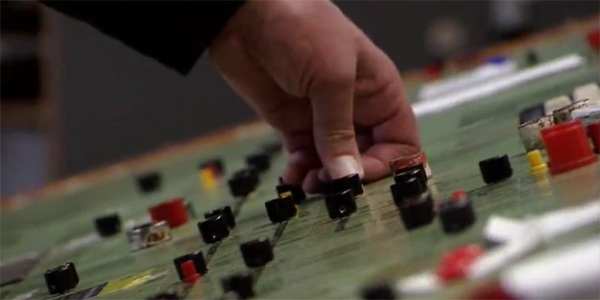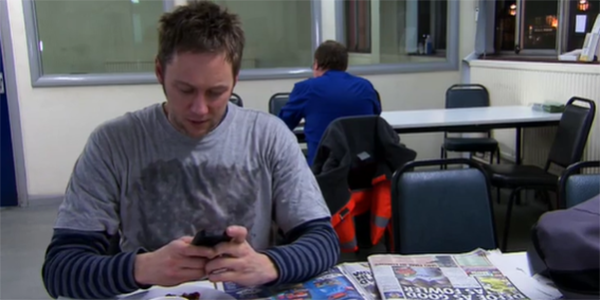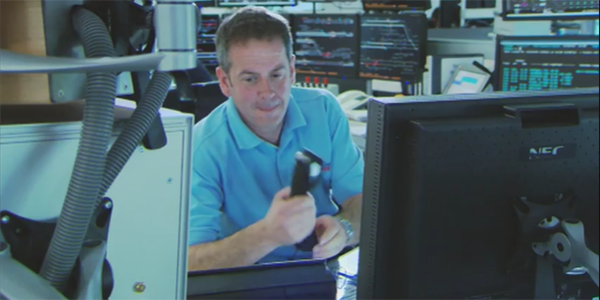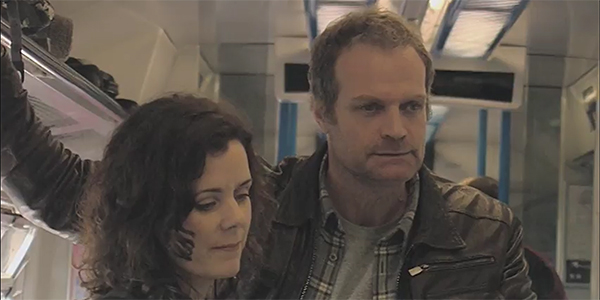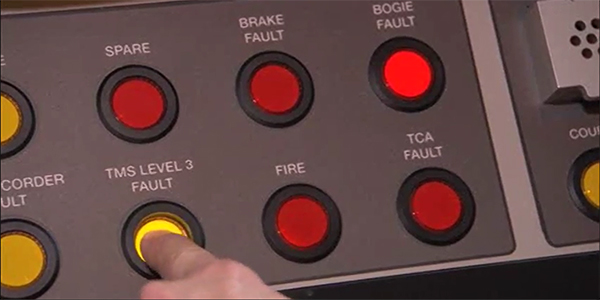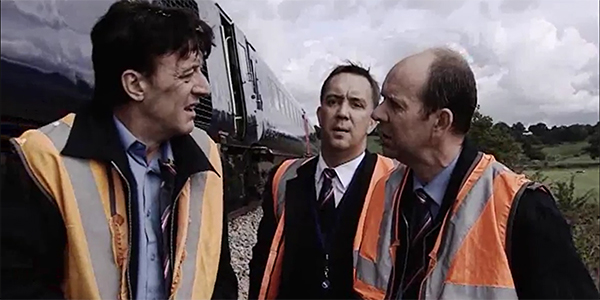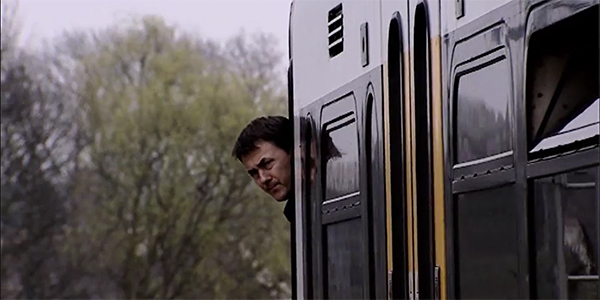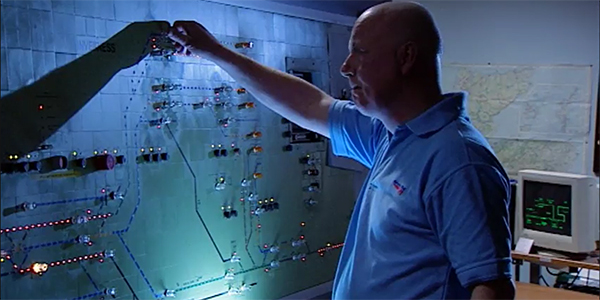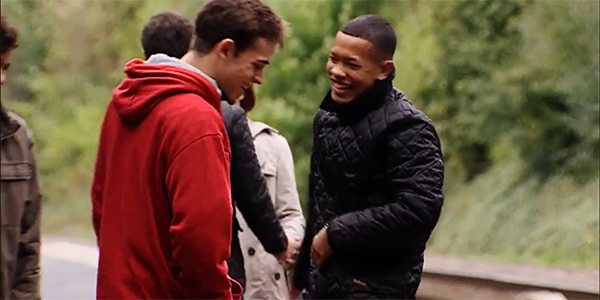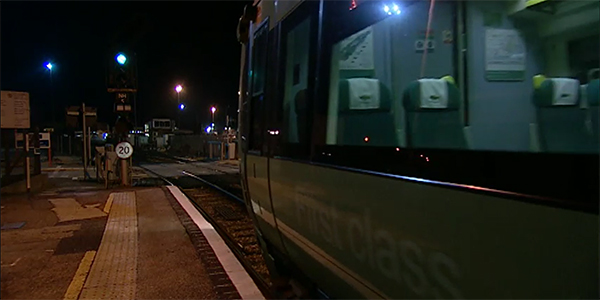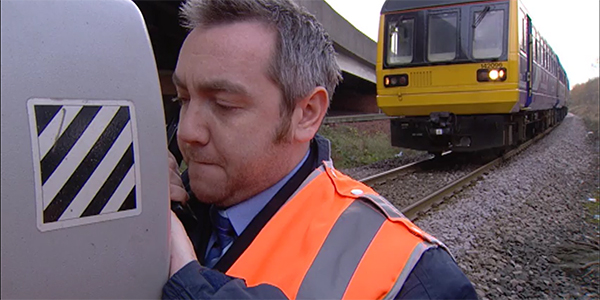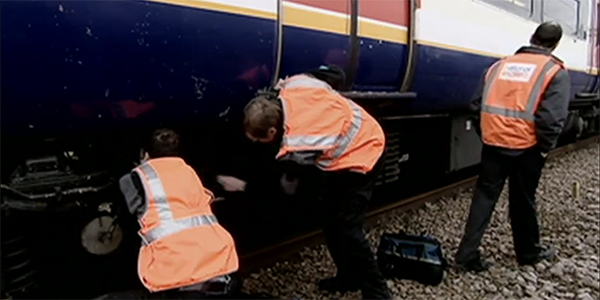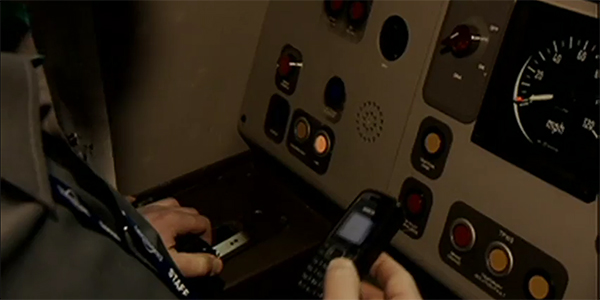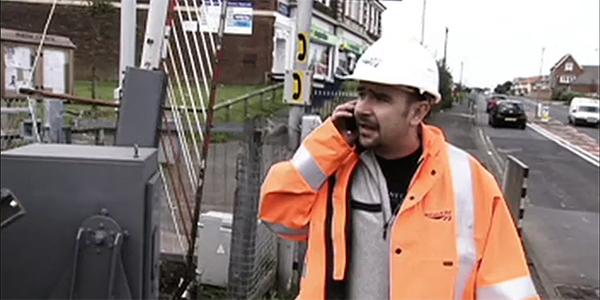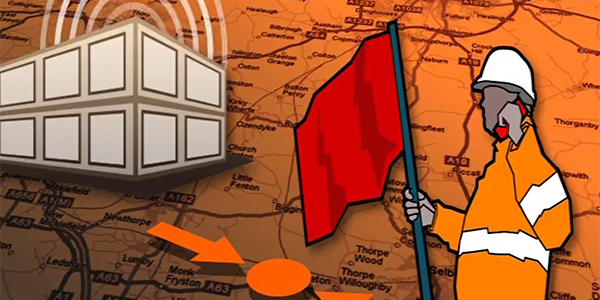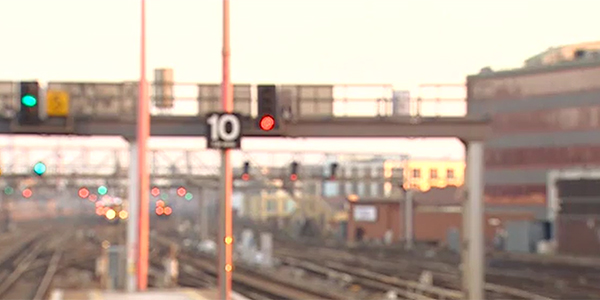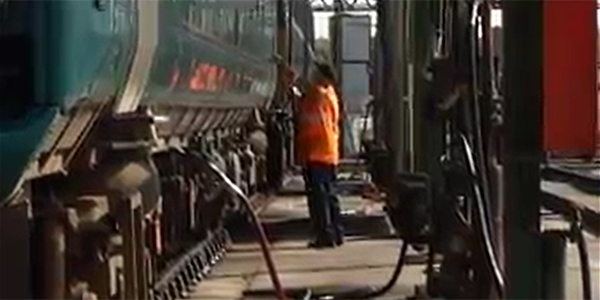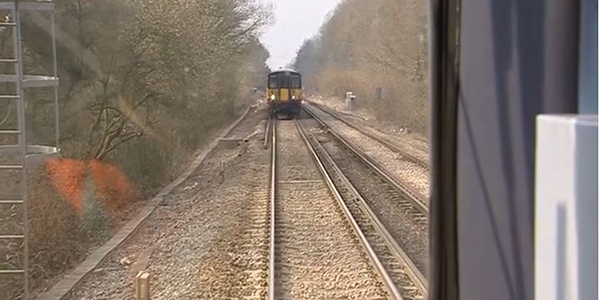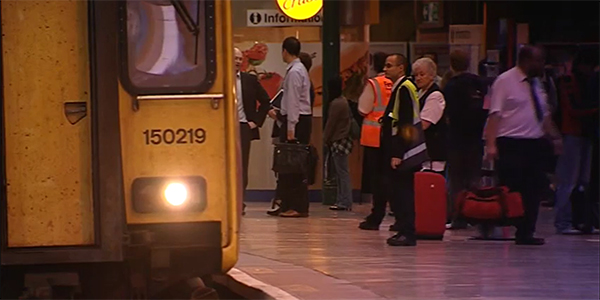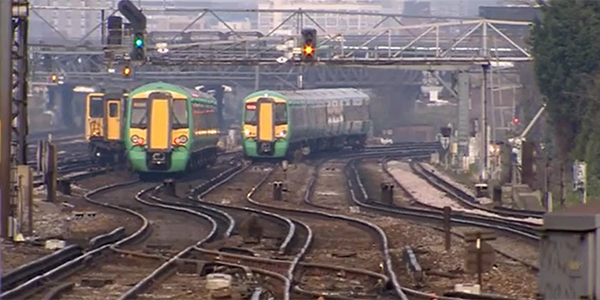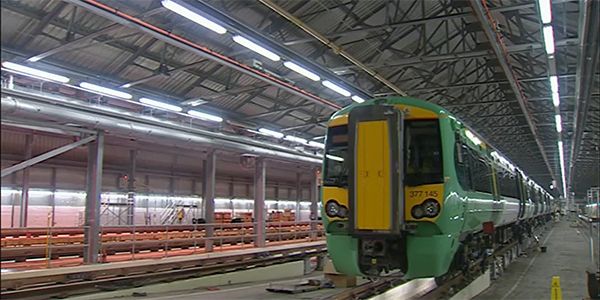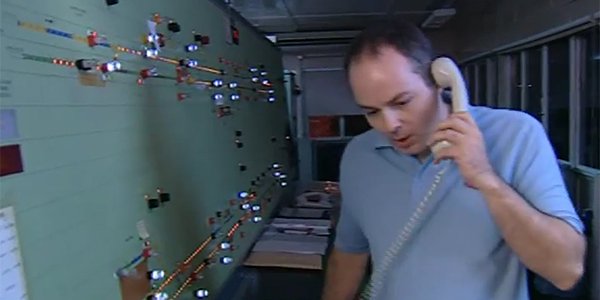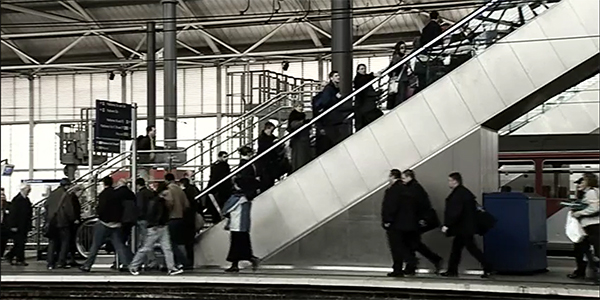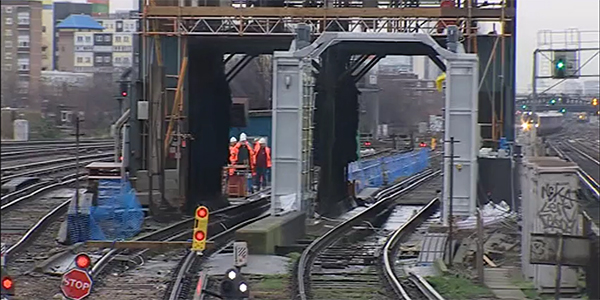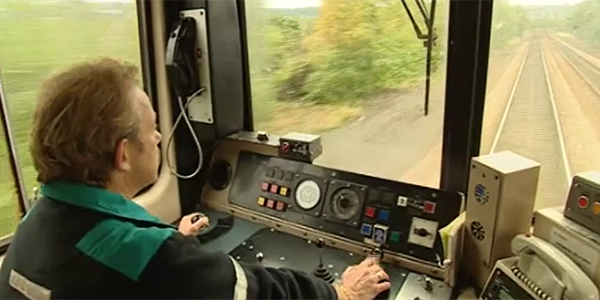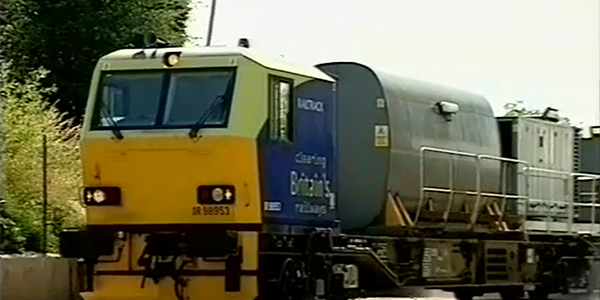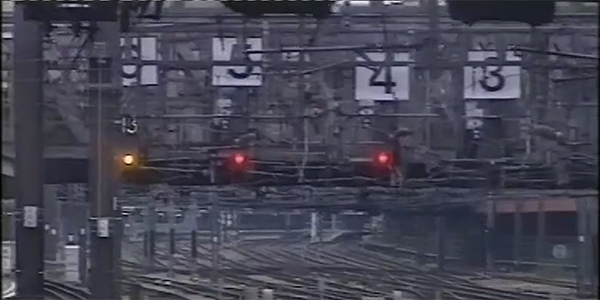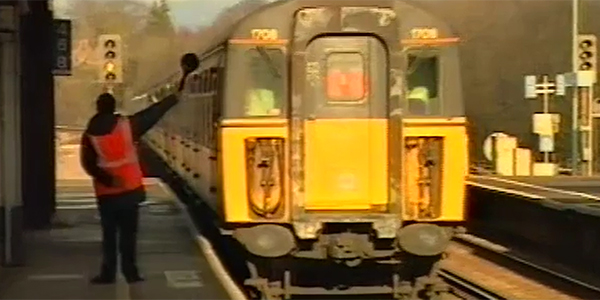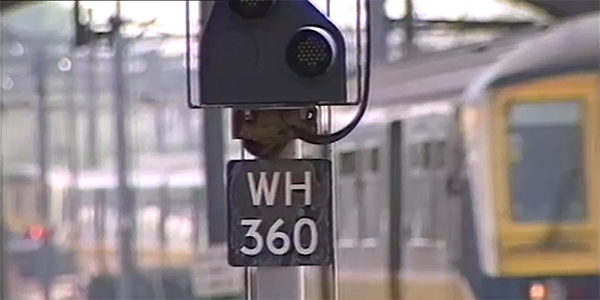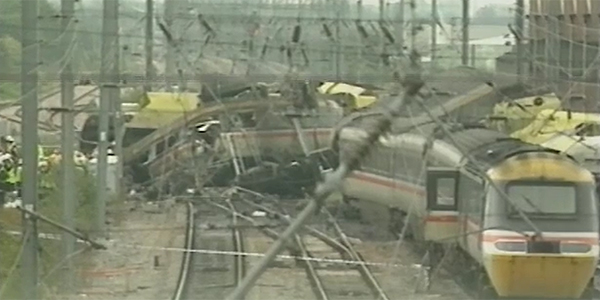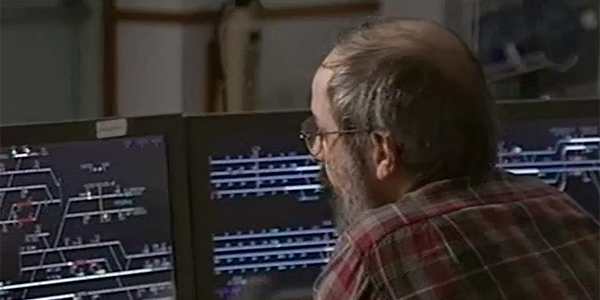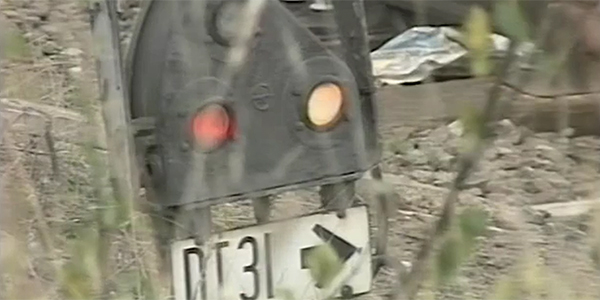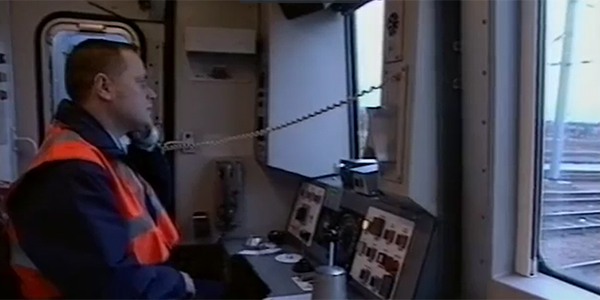RED 71 - Trackside Workers
A wide range of people work trackside, performing a range of tasks—from undertaking track inspections and general maintenance, to telecoms, earthworks, and enhancement work.

Premium
RED 70 – Lone Working
A lone worker is defined as anyone who works physically alone for several hours, with low levels of close or direct contact with other colleagues. In rail, what are the benefits and challenges of this type of role?

Premium
RED 69 – Safety Critical Communications
Safety critical communications is a vital part of running a railway safely and efficiently. Get it right, and everything runs smoothly. Get it wrong, and there can be damage to the infrastructure, injury, or even worse.

Premium
RED 68 - Work-Related Violence
Passenger behaviour and work-related violence is a key risk area in the rail industry. According to a 2018 report by RSSB, 94.1% of frontline staff have experienced workplace abuse.

Premium
RED 67 - Freight
In the UK, rail freight contributes around £2.45bn to the economy each year. It’s a rapidly evolving sector and a reliable, safe, and green way of transporting goods and keeping the country running. However, there are many risks and issues that should be carefully considered to help prevent accidents from happening.

Premium
RED 66 - Climate
Climate change is already having a significant impact on GB rail, and the severity and frequency of weather events is only likely to increase. Through collaboration, communication, policy, and research, the industry is working towards better weather resilience and preparation.

Premium
RED 65 - Platform-Train Interface
There are around 3 billion platform-train interface (PTI) interactions each year and incidents are relatively low. However, around 48% of the total passenger fatality risk on the mainline railway network can be attributed to PTI events.

Premium
RED 64 - Depot Safety
The railway has always needed depots of one kind or another. They are places to maintain trains, to load wagons, clean coaching stock, and stockpile rails and sleepers. With so much kit around, and people to work on it, safety has to be at the top of everyone’s list.

Premium
RED 63 – Bullying in the Workplace
Bullying in the workplace is more common than many people realise, and can take many forms. It can, and does, have a significant impact on mental health, wellbeing, and safety at work, so in this episode we explore how we can tackle this issue.

Premium
Red 62 - Asset Integrity
Points, trains and bridges are all assets, but so is almost everything on the railway – including the departures board, the signals and the seats in the carriages. RED 62 explains how all these elements link into a system and what the rail industry does to ensure asset integrity, and avert train accident risk.

Premium
RED 61 - Detraining
Why do passengers sometimes detrain or self-evacuate? It’s often due to trains breaking down, destroying our passengers’ own timetables and promises to employers, families and loved ones.
RED 61 gives you the story, provides pointers on how to reduce the risks, and suggests ways to help keep everyone in the picture when an incident occurs.

Premium
RED 60 - Station Safety
Stations can be places where assaults and accidents occur. In this RED 60 programme, we hear about the risks, what the industry is doing to tackle them, and what we can all do to help.

Premium
RED 59 - Trespass
Trespass brings severe safety implications, for the trespassers and the wider network. In this award-winning RED 59 programme, we hear about what industry is doing to tackle this problem, and what we can all do to help.

Premium
RED 58 - Human Factors

Premium
RED 57 - Level Crossings
This RED 57 programme looks at the risks posed by level crossings. A group of track workers are working in a possession by a level crossing. Errors in the handover between the crossing attendants are exacerbated by the PICOP’s fatigue and the signaller’s workload. These events lead to no signals protecting the crossing, and a very near miss.

Premium
RED 56 - Close Calls and Near Misses
This RED 56 programme looks at the importance of challenging safety information. A group of track workers have a safety briefing, but some of them aren’t sure about the information. The confusion about different warning systems leads to a very near miss.

Premium
RED 55 - Electrification
Based on the incident at Sutton Weaver, a driver stops his train and leaves his cab to assess damage to a section of overhead line equipment. This RED 55 programme considers the risks from energy feeds.

Premium
RED 54 - Stay Focused
A driver who has experienced a SPAD tries to deal with the aftermath. He contacts the signaller and control, and understands he has authority to continue—but from the wrong person. This RED 54 programme looks at SPADs

Premium
RED 53 - Left on the Track
This RED 53 programme looks at possessions. A group of track workers is spread over two locations. After a hard night’s work, they pack up and leave. The first train of the morning finds that they left something behind.

Premium
RED 52 - Mental Health
This RED 52 programme looks at mental health issues. Our dramatisation follows three colleagues, each dealing with their own problems. Sometimes those who seem least unwell need the most help.

Premium
RED 51 - Buffer Stops
This RED 51 programme looks at the human factors of fatigue and distractions. A driver has been working all week. It’s his wife’s birthday dinner that evening. When he is asked to do a run, his mind is not completely focused on the task at hand.

Premium
RED 50 - Rail Adhesion
This RED 50 programme looks at adhesion. A driver reports low adhesion to the signaller, who asks the mobile operations manager to attend. The next driver also experiences adhesion issues and is not able to stop at the signal protecting the mobile operations manager.

Premium
RED 49 - Past at Danger
Our railways are the safest form of land transport in the UK, because we learn lessons from incidents. This RED 49 programme looks back at some of the events that have shaped our safety rules, culture and understanding.

Premium
RED 48 - Clear Communication
This RED 48 programme looks at safety critical communications (SCC). A driver is experiencing technical issues. He asks the signaller for permission to leave the cab. The conversation does not follow SCC protocol, leading to a misunderstanding—and a very close call.

Premium
RED 47 - Technology Special
This special edition of RED 47 looks at the role of technology on our railways. We look at how it affects roles and improves safety. However we recognise that technology has its drawback, and can bring risks.

Premium
RED 46 - Making Assumptions
This RED 46 programme looks at fatigue and error. A driver on his first night shift after paternity leave is clearly tired. He is eager to get home, but he is held at a signal. Eventually the position light clears—but not for the right platform.

Premium
RED 45 - Trap and Drag at the Platform / Train Interface
This RED 45 programme looks at distraction and the risks at the platform train interface. A driver on his last shift before retirement is distracted, and misjudges a station stop. He can’t see the bank of monitors clearly but as the traction interlock light is on, he assumes it’s safe to move.

Premium
RED 44 - Assuming Safety
This RED 44 programme looks at the importance of following procedure. A driver notices a cow walking in the cess and informs the signaller. We see how poor communications and a failure to follow correct emergency procedures allow the situation to escalate into a serious incident.

Premium
RED 43 - Emergency
This RED 43 programme looks at how we can influence passenger behaviour. It is based on incidents at Kentish Town (2011) and Hither Green (2013). Passengers become increasingly anxious as smoke fills their carriage and proceed to detrain onto the running line.

Premium
RED 42 - Challenge....Don't Assume
This RED 42 programme looks at the importance of challenging safety information. A group of track workers travel to their site using a different gate. The controller of site safety, at another location, phones the signaller to arrange the line blockage but doesn’t know their location.

Premium
RED 41 - Just Another Day
This RED 41 programme looks at semaphore signals. Inspired by a real event, this RED follows two track workers in a semaphore signalled area. They narrowly avoid being killed when a train passes a signal at danger.

Premium
RED 40 - Driving at Caution
Two heavy on-track machines are carrying out routine maintenance on the same stretch of track. The second machine is given authority to move, as the first machine is also expected to clear the line.

Premium
RED 39 - Keeping a Cool Head
This RED 39 programme looks at remaining composed under pressure. The barriers at a level crossing start to lower, trapping a truck as a train approaches. Two P-way staff alert the signaller and an oncoming train, preventing a serious incident.

Premium
RED 38 - Emergency Action?
A train driver sees an off-track inspector ahead and sounds his horn. The off-track inspector acknowledges it but doesn’t move to a position of safety.

Premium
RED 37 - Revisiting the Platform-Train Interface
This RED 37 programme looks at passenger behaviour and the platform train interface. A group of girls see their friend onto a late train after a night out. They are under the influence of alcohol, impairing their judgement and making them vulnerable – and leading to tragic consequences.

Premium
RED 36 - The Same as Usual
This RED 36 programme has two dramatisations which look at overfamiliarity. In the first, a driver used to the route doesn’t notice that the starting signal is at danger. In the second, a signaller managing bi-directional working wrong routes the last train of his shift.

Premium
RED 35 - Day Sleeper
This RED 35 programme looks at road risk and fatigue. A rail worker is struggling to cope with shift work and a baby and becomes fatigued. At the end of a long shift he doesn’t take advantage of overnight accommodation but chooses to drive home.

Premium
RED 34 - A Lapse of Concentration
A train is signalled from the siding onto the main line, but the points are not set correctly for the route. As the signaller tries to get in touch with the driver, another service is approaching from the opposite direction.

Premium
RED 33 - One of Those Days
This RED 33 programme looks at how one problem can affect the wider network. A train comes to a halt across a junction, with the driver unable to release the brakes. The passengers on other trains delayed by this incident become irritated, and eventually some detrain and walk to the nearest station.

Premium
RED 32 - Seconds to Decide
This RED 32 programme has two dramatisations. The first follows the action of a train crew following a bogie derailment. The second considers the safety critical communications between a permanent way manager and local signallers.

Premium
RED 31 - This is an Emergency Call
A train travelling at 90 mph collides with a fallen tree, causing extensive damage to the leading cab. The driver can’t use the radio, so must find another way to contact the signaller.

Premium
RED 30 - An Unexpected Halt

Premium
RED 29 - A Very Simple Mistake
A driver normally routed into Platform 2 is routed into Platform 1, and calls the signaller from the wrong phone. The driver involved in this incident got in touch with RED so others could learn from his mistake.

Premium
RED 28 - Risk at the Platform Train Interface
This RED looks at passenger behaviour at the platform train interface. A dispatcher supervising the departure of a passenger service has many demands on his attention. Consequently, he fails to see that a young woman, saying goodbye to her boyfriend near the front of the train, is standing much too close to the doors.

Premium
RED 27 - Wrong Routing Causes Near Collision
This RED, based on an incident at Newhaven Harbour in September 2009, looks at fatigue. An exhausted signaller with demands on his attention causes two passenger services travelling in opposite directions to come face-to-face.

Premium
RED 26 - Derailment in Cumbria
This RED looks at the importance of reporting issues. A two-car Class 156 experiences violent side-to-side motion, but the driver doesn’t report it until he is in the Carlisle mess room. The driver of the following train sees the buckled line but isn’t able to stop in time.

Premium
RED 25 - SPADs and Possessions Irregularities
This RED looks at SPADs in possessions. A signaller gives a tamper permission to enter a possession, passing a signal at danger. The person in charge of possession meets and directs the tamper to the work site. The tamper passes the next three signals at danger.

Premium
RED 24 Safety on Track
This RED looks at the importance of following safety procedures. Two fitters are sent to assist a failed train but don’t speak to the signaller to arrange protection. When they arrive, they and the driver attempt to assess the damage from the six foot and again, do not arrange protection.

Premium
RED 23 - Mobile Telephones
This RED looks at distraction and technology. A driver passes a signal at danger by 90 yards. The investigation into the incident examines the driver’s telephone bill, which showed that he had been involved in several telephone calls and text messages during his duty.

Premium
RED 22 - Irregular Working and Communications
This RED looks at level crossings. One of the barriers at a level crossing fails to rise confusing motorists as to when it is safe to cross . Poor communications between the signaller and the mobile operations manager lead to a misunderstanding and a fast train nearly collides with road traffic on the crossing.

Premium
RED 21 - Hand Signalling
This RED looks at hand signalling. A signaller asks for assistance to inform drivers of the emergency speed restriction at a signal protecting a defect. However, one driver is incorrectly advised to pass the signal at danger.

Premium
RED 20 - No Silver Bullets
This RED looks at SPADs, and the mechanisms in place to prevent them. A driver slows his train, but still passes a signal at danger. The Train Protection Warning System brings the train to a halt. It comes to a stand 8 feet short of the conflict point.

Premium
RED 19 - The Authorised SPAD
This RED, based on an incident at Cheltenham Spa in November 2006, looks at workload and distraction. A signaller has had a difficult shift. He authorises a train to pass a signal at danger but doesn’t set the points.

Premium
RED 18 - Expecting the Unexpected
This RED, based on an incident at Effingham Junction in January 2007, looks at safety critical communication. An inexperienced driver working in degraded mode speaks to the signaller. The conversation doesn’t follow safety critical communication protocols, resulting in confusion.

Premium
RED 17 - The Industry's Most Hazardous Job
This RED, based on an incident at Old Oak Common in January 2005, looks at the risks in yards and depots. A driver and shunter are remarshalling coaches for a charter train. The shunter becomes trapped between two of the coaches.

Premium
RED 16 - The Changing Risk Profile
This RED looks at maintaining concentration. A signaller reports a track circuit failure to control. He gives the driver of the next train authority to pass the signal at danger but doesn’t realise that the train is standing at the signal in rear.

Premium
RED 15 - Mistakes
This RED looks at safety critical communications. A driver stops at a station not normally on his route after his train develops a fault. Poor communication with the signaller leads to a misunderstanding about whether there is a block or not.

Premium
RED 14 - Precursors
This RED looks at concentration and mental wellbeing. A driver is having problems in his personal life, including bereavement. The stress has an impact on his ability to perform professionally. He is involved in several operational incidents, leading to a SPAD.

Premium
RED 13 - Safety Critical Communication
This RED, based on an incident at Lichfield Trent Valley in October 2004, looks at safety critical communications. A driver stops at a signal at danger. After poor safety critical communications with the signaller, the driver believes he has authority to pass the signal at danger.

Premium
RED 12 - Professional Management
This RED looks at SPADs. A train has a SPAD as it leaves a station. There were several contributory factors, making the decision about a Specially Monitored Driver plan more complex than usual.

Premium
RED 11 - ECS and Light Loco SPADs
This RED, based on an incident at Clapham depot in April 2004, looks at empty coach services and light locomotive operations. A train moves from the depot to enter service at Waterloo. Just past the depot limits, the train passes a signal at danger.

Premium
RED 10 - Distractions
This RED, based on an incident at Blackfriars in May 2004, looks at concentration and attention. As the train leaves the station, the driver hears a car backfiring. He takes his eyes off the signal to look for the car, and brakes too late.

Premium
RED 9 - Working together
This RED looks at driving yellow plant in possessions. Two tampers return to the depot after works. The second machine follows the first under yellow aspects. Signal K446 is at red. The driver passes it, unaware that he has had a SPAD.

Premium
RED 8 - 100% Professionalism
We all have a role in reducing SPADS. In this RED, we explore the idea that lies behind many advances in SPAD reduction.

Premium
Red 7 - Human Factors in Railway Operation
In this RED, we explore how important human factors are in making the right decisions. Bridge-building exercises between drivers and signallers improve safety critical communications and help them understand each other.

Premium
RED 6 - Anatomy of a SPAD - part 2
This RED looks at a series of SPADs, including at level crossings and in areas of low adhesion. It considers the approaches the industry is taking to tackling SPADs, as well as what we can do individually, including reducing the use of mobile phones.

Premium
RED 5 - Anatomy of a SPAD
This RED looks at distractions and maintaining focus. A driver is working his normal shifts, but his father’s ill health plays on his mind. One evening he reads a signal on an adjacent line in error; when he notices the signal for his line is lit it’s too late.

Premium
RED 4 - A Question of Responsibility
Signallers have a responsibility to prevent SPADs. If there is a SPAD, they need to mitigate any events it could lead to. This RED 4 programme explores Category A SPADs and the question of responsibilities between the driver and the signaller.

Premium
RED 3 - Mental Trap
This RED 3 programme focuses on Start Against Signal and Start On Yellow SPADs. Preventing these depends on recognising human factors elements that can bring risk to railway operations.

Premium
RED 2 - Unintended Consequences
The line ahead of a driver is blocked. He calls the signaller, who asks him to do a double shunt. The driver has not performed this move before and is unfamiliar with the new route that has been set.
